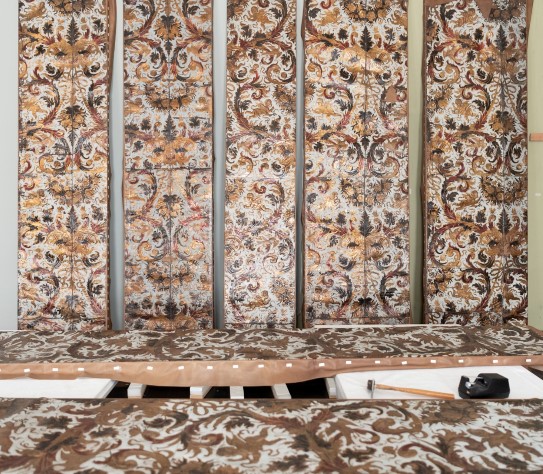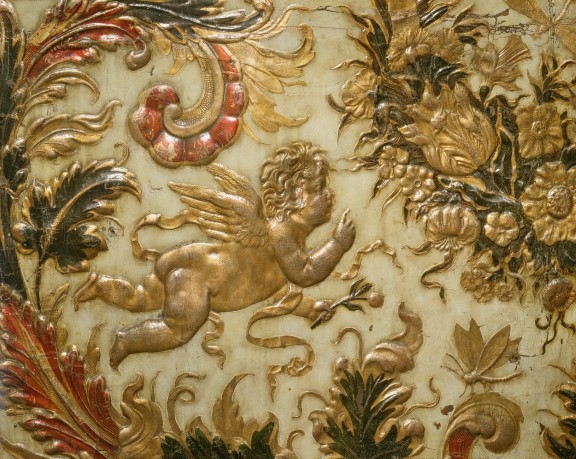
Rich decor
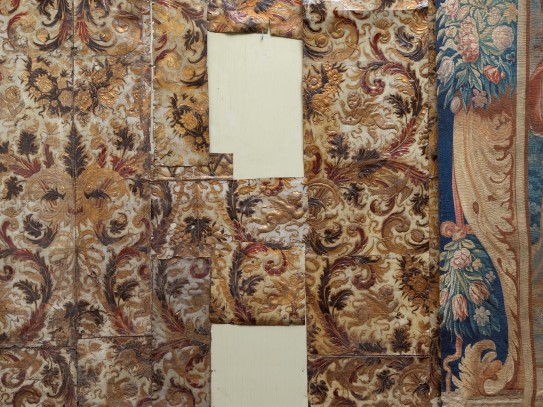
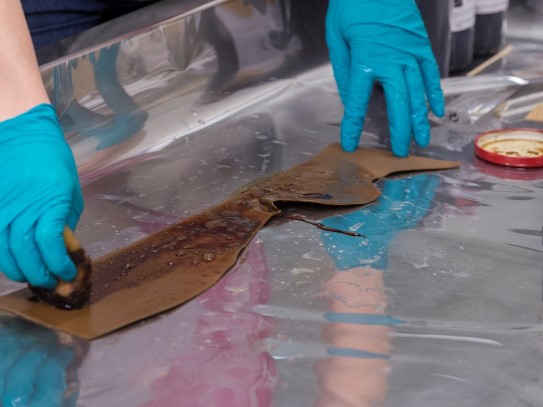
Washing and cleaning gilded leather. Photo: Nasjonalmuseet / Annar Bjørgli
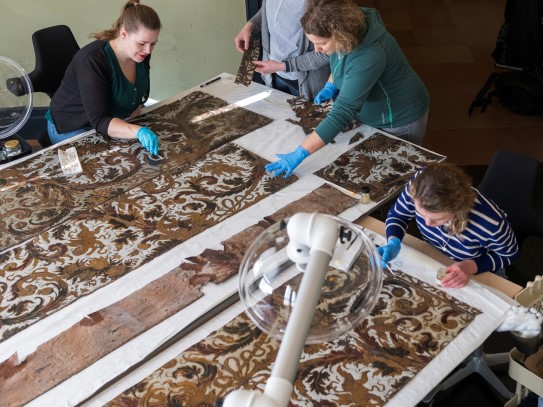
Nailed to the wall
At Højriis Castle and later at the Museum of Decorative Arts and Design the leather panels were originally nailed to the wall, a form of mounting that lacked flexibility. Since leather is an organic material, it shrinks and expands with the changing seasons. Over the years, this has resulted in tears and holes, which the conservators have repaired by filling them with new leather. This was pre-dyed to harmonise with the gilding of the original.
As a result of centuries of natural ageing, exposed to varied light conditions, dust, dirt and air pollution, the colours of the wall covering have lost their brilliance. Green tones have dulled to dark brown, and the white has turned yellow. To restore the wall covering as far as possible to its original appearance, it was necessary to remove the old varnish and dirt – a major part of the conservation work. Since the original varnish is highly sensitive to solvents, this work was only performed on the brighter sections of the material.
